Mallorca off the beaten path: Wine, forest and village
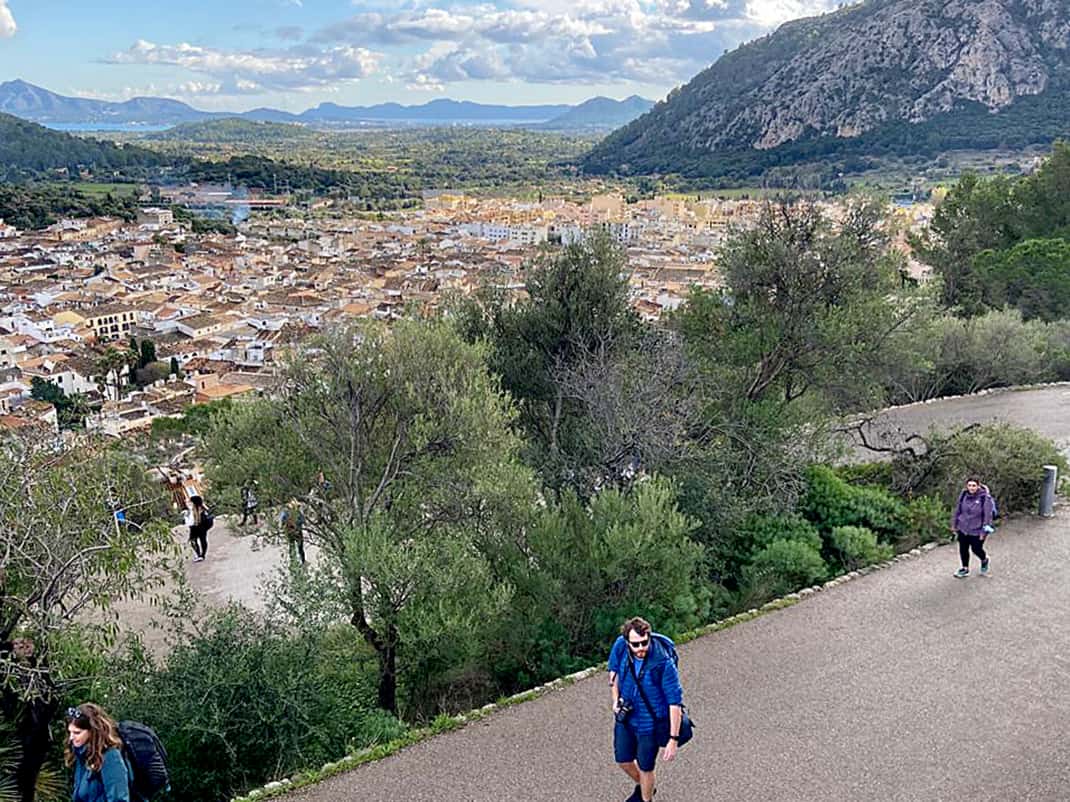
(This is the second of a three-part series on the Spanish island of Mallorca. Today: The countryside.)
“I live where I would like to live. I live in Majorca, Spain, and I am not sure there are better places.” — Rafael Nadal.
PALMA DE MALLORCA, Spain — I was a sportswriter for 40 years and still dabble in it. I rarely covered tennis but Rafael Nadal seems like one of the nicer guys in sports. He appears approachable, fairly accommodating and, more than anything, honest.
When he says he isn’t sure there’s a better place than Mallorca (and he’s an active promoter in Mallorca commercials), I believe him.
Well, I’ve been to better places in the world. Bora Bora comes to mind. So does Sicily. But Mallorca (“Majorca” in Spanish) is up there. It has beautiful beaches, a lively capital, great wine and gorgeous nature. And I went in November. It rained every day. I didn’t walk on a single beach.
Yet Mallorca is so much more than beaches and bars. You don’t need to join the summer mobs to enjoy the island. I spent a week and took three excursions from the island capital of Palma to the beautiful countryside. A winery. A hike. A village. All three were in different places. All three were beautiful.
Here’s a slice of life from rural Mallorca:

Vins Nadal
No, Rafael isn’t crushing grapes when he’s not crushing forehands. Turns out, Rafael Nadal is a fairly common name in Mallorca. In fact, a Rafael Nadal is the son of Michel Nadal, who started the Vins Nadal winery in 1932.
I came to Mallorca for Traverse21, a travel bloggers conference, and they organized excursions around the island. I met a group at Cami de l’Escullera, a long service road in Palma that juts into the Mediterranean. It’s a good place to see the sunset but I barely saw the sun all week. I did see a couple of cruise ships (Yes, they’re back.) floating off in the distance like sleeping sea monsters.
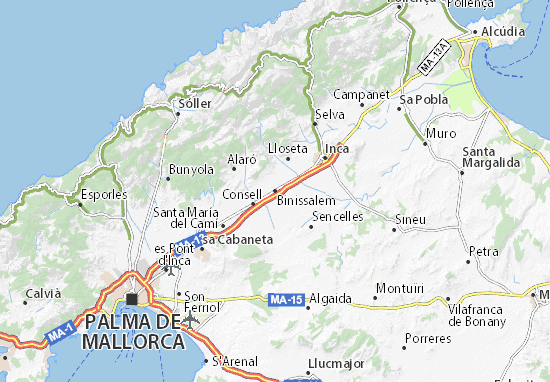
About a dozen of us hopped in a big van and headed northeast on one of Mallorca’s main highways, MA-13. It’s a short 30-minute drive to the town of Binissalem. The village of 8,000 is the center of Mallorca’s underrated wine country. It’s the base for 13 wineries all of which feed the rest of the island and much of Spain.
Mallorca’s wine culture dates back 2,000 years when it was part of the Roman Empire. With vast flat spaces sheltered by mountains and near the sea, Mallorca has always had the perfect climate for winemaking. In fact, the famed Roman writer from the 1st century A.D., Pliny the Elder, raved about the wines on the island. Soon Mallorcan wines became popular at Rome ceremonies, tavernas and, presumably, orgies.

The wines in Binissalem became so good, the King of Mallorca in the 14th century built a winery to pay local taxes in part with the city’s red wine.
In the 1960s, Mallorcan tourism exploded and so did the wine industry. Hotels popped up all over the island and were selling out of Mallorcan wines almost as soon as they were bottled. The wineries put their profits into technology which increased the quality.
In 1991, Binissalem earned the prestigious Denominaciones de Origen (DO) proof that the quality is strictly controlled. Forbes reported that Binissalem built new vineyards with an emphasis on indigenous grapes and international varieties.
Tripadvisor rates Vins Nadal is the top-rated winery in Binissalem. It’s on one of Binissalem’s many small, narrow roads with a beautiful, huge, airy display room. A big wooden display case shows a retro map of the local wine area. Bottles of wine line up on display tables like attentive servants.
Rebecca, our host, is a Dusseldorf, Germany, native who’s lived in Mallorca for 13 years. She sheepishly apologized for the cold, rainy weather in the 50s. The winery’s high roof leaked in spots, even in the bathroom.

“You should come back in the summer,” she said.
She said demand for Mallorcan wine was so great in the 1950s, the Nadals bought wine already produced on the mainland. They’d mix it with their own wine to satisfy the demand. They even opened a third winery in Palma.
“Over 30 years, people have been really happy but of course, mixing wine, the quality went down,” Rebecca said. “They wanted to bring it up. People started asking for quality.”
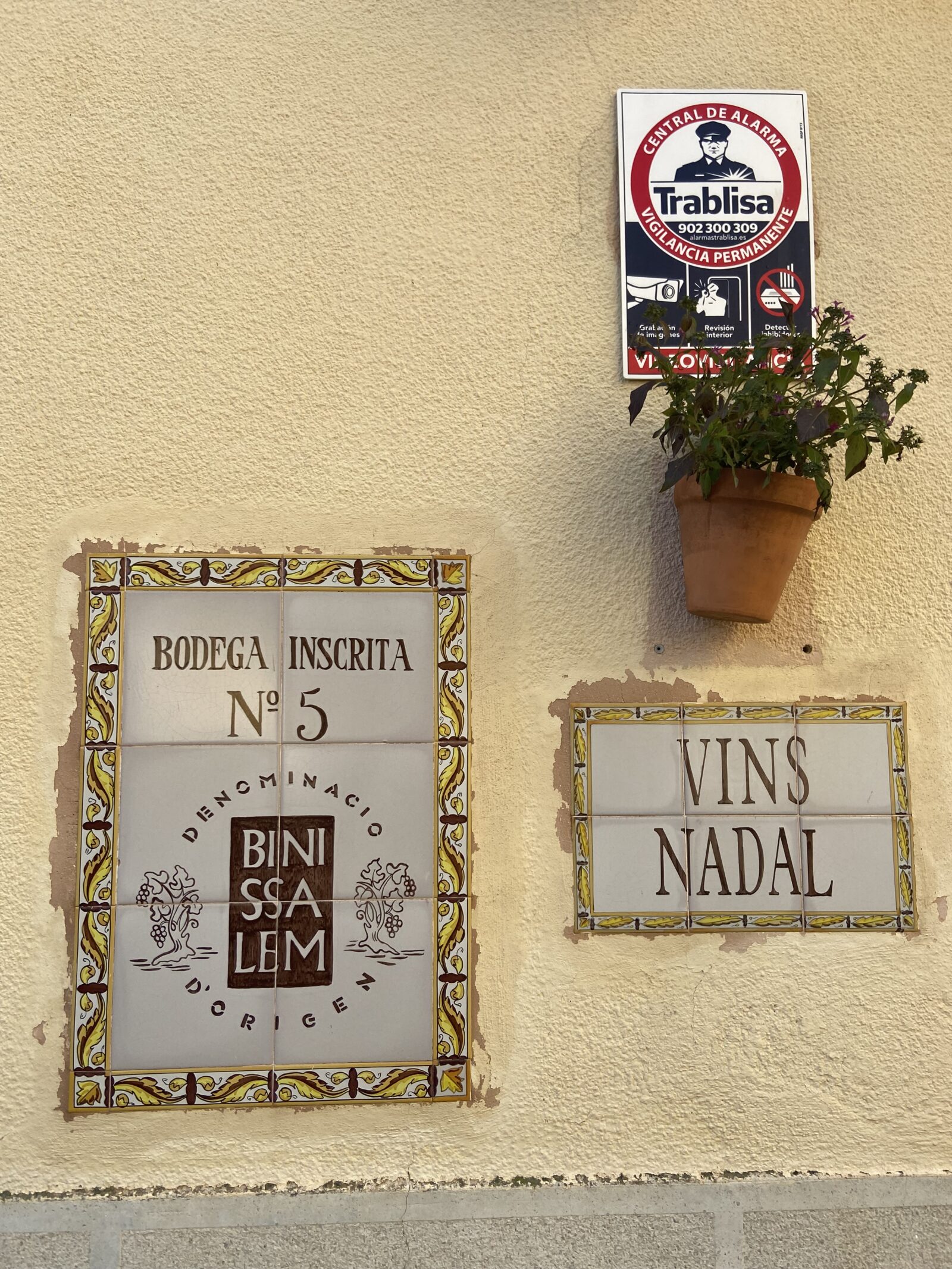
So they closed the second and third wineries and concentrated on the sprawling family house where we sat at a long table sampling wines. Unlike many wineries, the Nadal vineyards are 10 kilometers away.
They used to sell up to 1 million liters a month. Today, with an emphasis on quality, they sell 70,000-80,000 per year. (And they’re environmentally conscious. They recycle their bottles and only use recycled paper for their labels.)
We tried four. Here are my very amateurish notes with even less-valid ratings.
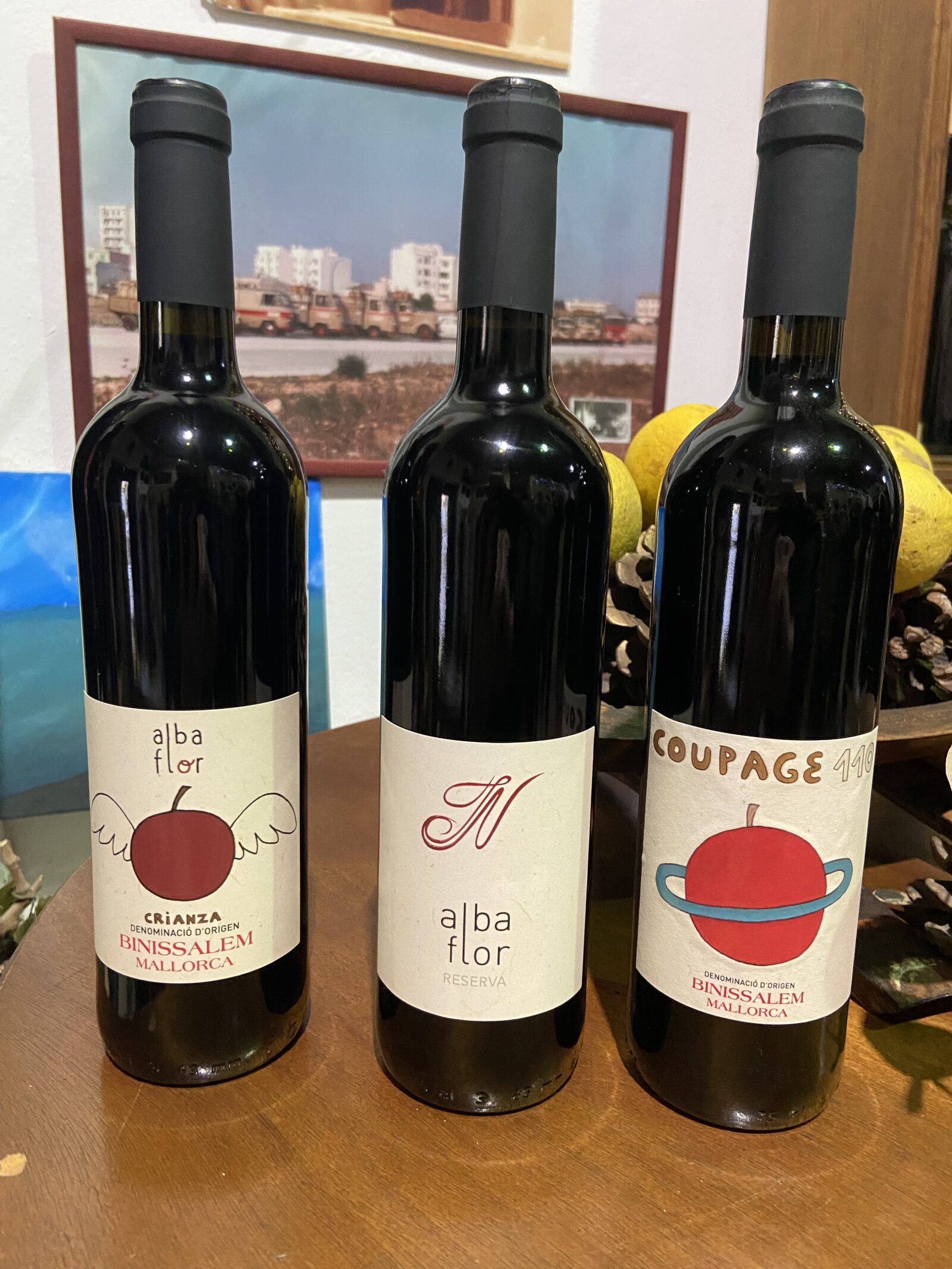
Alba Flor 2020: A mix of Chardonnay, Montenegro, Macabeo and Muscatel grapes. A fruity white wine that’s a nice balance between dry and sweet. Very good with Mallorca’s delicious Marques cheese served among the other appetizers. Rating: 6.
Rose: 100 percent Montenegro grapes. Red berries, a floral nose with touches of vanilla, grapefruit and licorice with a buttery aftertaste. (Rebecca’s learned description, not mine.) Too weak for me. Rating: 4.
Crianza 2018: A wonderful blend of Montenegro, Cabernet and Merlot. Very fruity that could go with any heavy meat or pasta dish. Rating: 8.
Coupage 110 2016: Same blend but lighter. Fruit dominated, but not too light. Rating: 6.
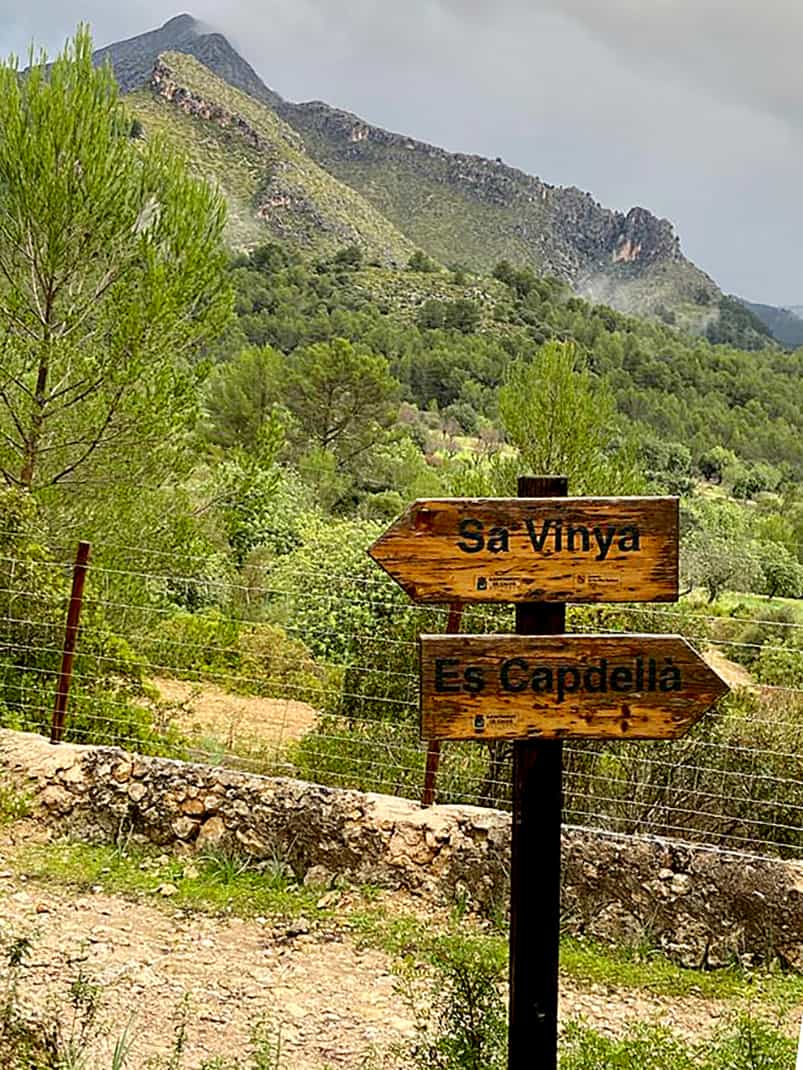
Forest bathing
When I read the invite, I only saw that we were going for a hike in a Mallorcan forest. They had me with “hike.” I should’ve inquired what the hell “bathing” meant. It turned out to be a key ingredient to one of the sillier afternoons of my life.
I woke that morning to a thunderous downpour. I could barely see the sea from my hotel balcony. Surely we would call off a hike into a forest that would turn forest bathing into “mud bathing.” But organizers said it remained on schedule and about a half dozen of us gathered in pouring rain on Cami de l’Escullera. They said the weather would clear soon.
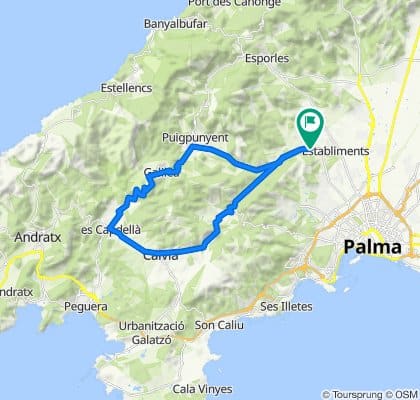
We took a short ride west to the village of Es Capdella. It’s only 1,000 people on the little peninsula that sticks off the west end of the island like a fist. The zone is as green as Ireland and much hillier. It’s the home of the Serre di Tramontana, a mountain range that’s a UNESCO World Heritage Site and stretches the entire length of Mallorca’s northwest coastline.
We drove through town to a forest called Finca Publica Galatzo’. We saw a trailhead. We stopped. Barbara, our Italian guide, explained what forest “bathing” meant.
“It’s not a hiking tour,” he said.
Uh-oh.
“It’s a wellness experience to improve our health and relaxation,” she said. “It’s a practice of the mindfulness of immersion and connection with nature.”
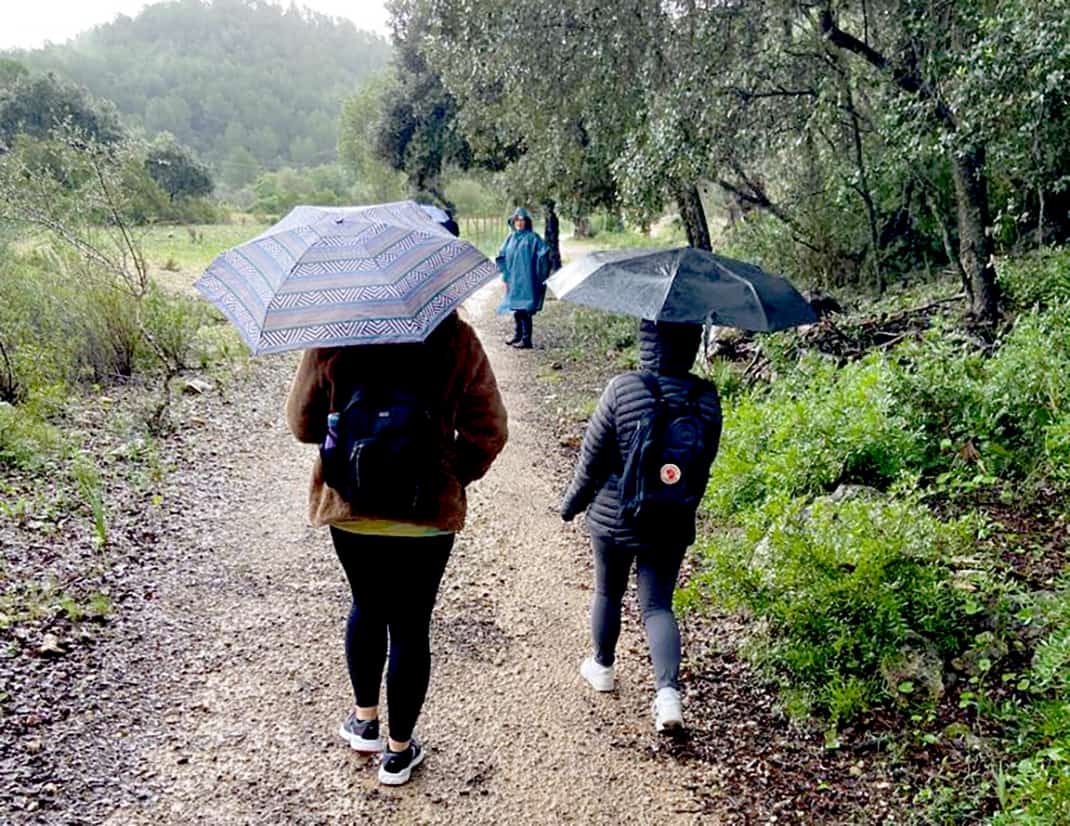
It started in 1980 in Japan where British doctor Philip Kingsley studied the effects nature had on our health. Why do we feel good when we’re in nature? Barbara said studies concluded that nature has positive effects on our lower heartbeat, blood pressure, blood sugar, relaxation, concentration, vision. It increased anticancer cells and antibody cells.
Kingley had to go to Japan to discover this? I could’ve told him that just by walking through a park. Or taking him to this spot. The rain didn’t pass. It only slowed to a steady drizzle. But despite the cloud cover, the area was beautiful. We were standing in a bright green meadow, surrounded by trees of olive, pine, carob and oak.
Off in the distance we could see the towering green triangle of 1,025-meter Piug de Galatzo’. This is one reason I came to Mallorca. I was off the beaten path, in the middle of an island forest far from the beach and crowds.
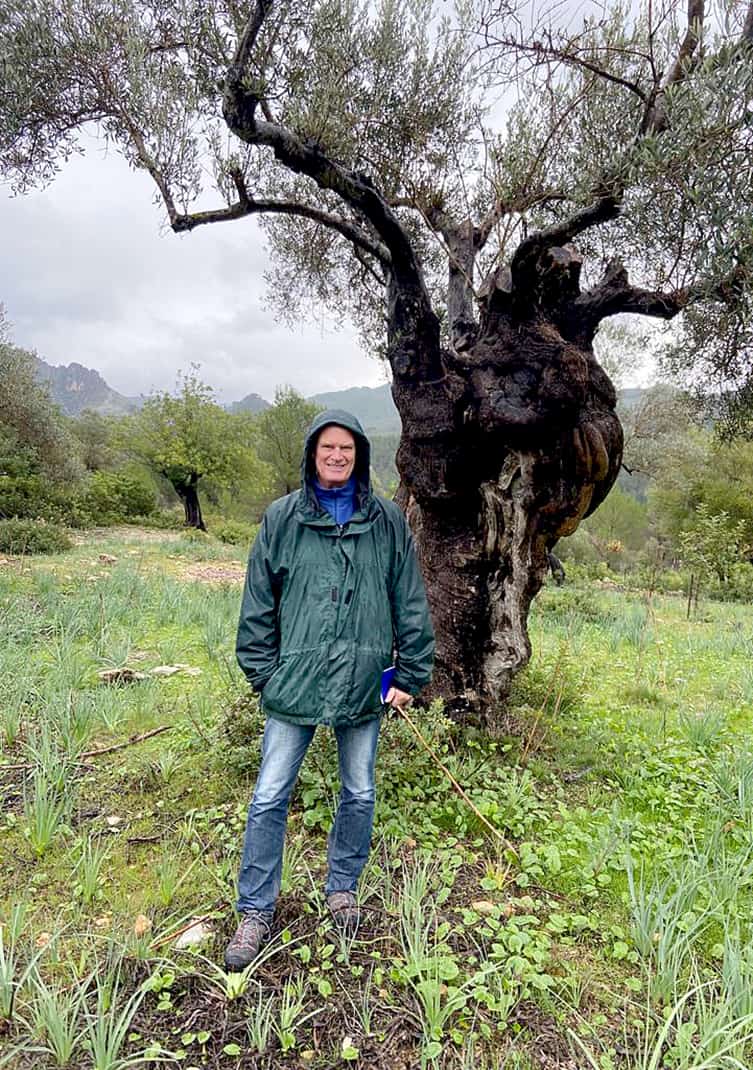
Then it got weird.
Barbara had us stand in a circle. She said when we talk, pick up something off the ground, apparently to be part of nature. We silenced our cellphones. It started innocently. She told us all to tell us our favorite forest animal.
One person said gibbon. One said squirrel. Another said butterfly. I said lion. Why? No, I wasn’t trying to prop up my fading manhood, although standing in that silly circle it started to droop.
“I’m a cat person,” I said simply.
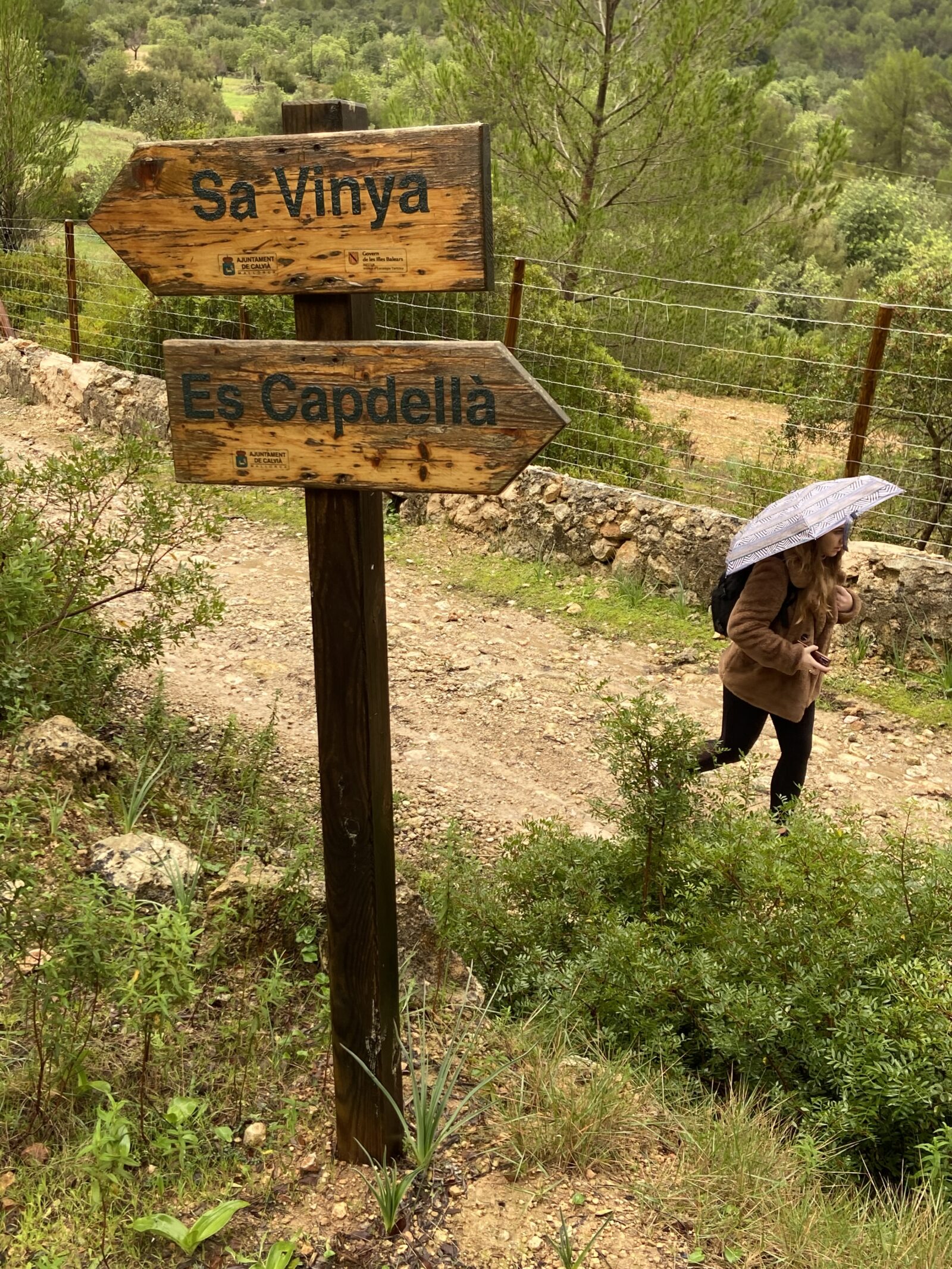
We started our walk along a narrow dirt trail, remarkably stable despite the morning downpour. We climbed gently through the thicket of trees and with each turn we had a new view of the Serre de Tramuntana. It was good to get exercise. It was good to see a side of Mallorca few see.
Then Barbara called us in for a circle.
“What’s the one word that comes to mind right now?” she asked.
Then calm the adjectives: Calm. Cold. Peaceful. I wanted to say, “Annoyed” but I played along and said, “Relaxed.”
As we started hiking again, Barbara said, “Pay attention to placing your feet on the ground like a kiss. Kissing with the earth.”
Oh, boy. This was turning into a hike combined with meditation and Western Zen. I started feeling like I’d just signed up for an ashram.
Then came Stop No. 3. By this time, I was looking at my watch. I wondered when the bars open in Palma. She told us to go around the forest and find patterns. Patterns in the branches. Patterns in the trees. Patterns in the mountains.
Instead, I went and pissed on a bush.
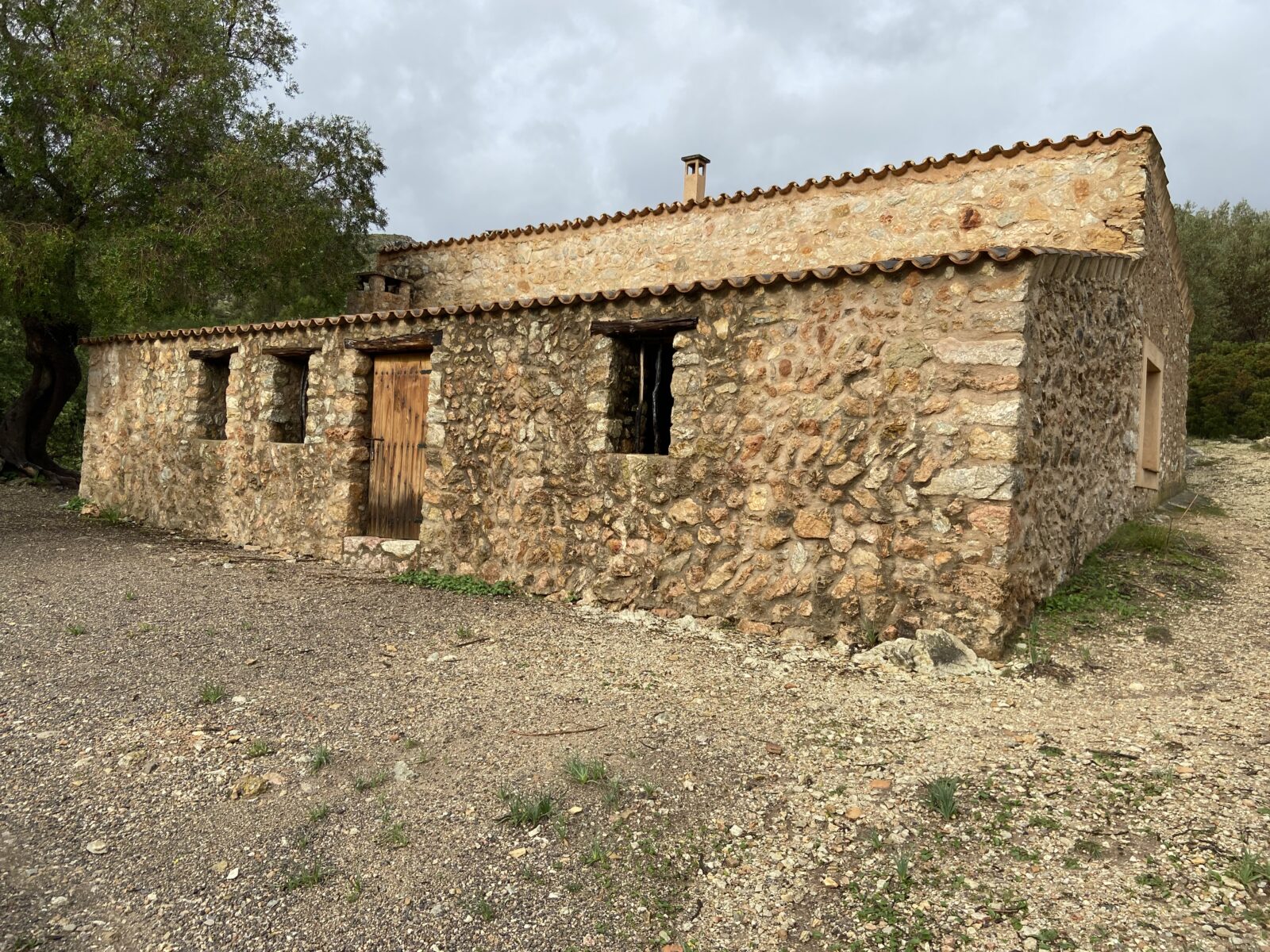
It turned into a long break. We were at a big shelter, a crude building used as a pilgrim’s refuge, animal shelter and storage. The practice dates back to the 15th century although the building had no date. We lounged around, sat on picnic tables, basked in the sun that slowly creeped through the once black clouds.
Then she called us into another circle.
“With your body,” she said, “make motions that describe the pattern you saw.”
People started waving their arms over their heads or around in a circle, each one looking increasingly more embarrassed. They all looked like they were swatting mosquitoes in slow motion. It all looked so silly. I hate silly. I’m 65 years old. I don’t do silly. When it came to my turn, my sweet disposition ended.
“I saw olive branches,” I said, “I have no idea! What the hell motion do olive branches make?”
The coup d’etat came when her last instruction was to remember our favorite forest animal and alk through the forest like it.
Right.
My short acting career in Rome was cut short due to visa problems. Yet I knew I’d never make it as I feel uncomfortable being someone I’m not. Walking around a forest on all fours, or roaring would require more hallucinogens than any wild Mallorcan beach party could ever provide.
Some people liked it. One woman into meditation said she did. It’s been around for 40 years so it obviously benefits a lot of people. It just didn’t benefit me.
We mercifully ended the afternoon by picking up another object, saying a word about the nature we experience and placing the object in a pile. Peace. Meditation. Tranquility.
Goodbye.
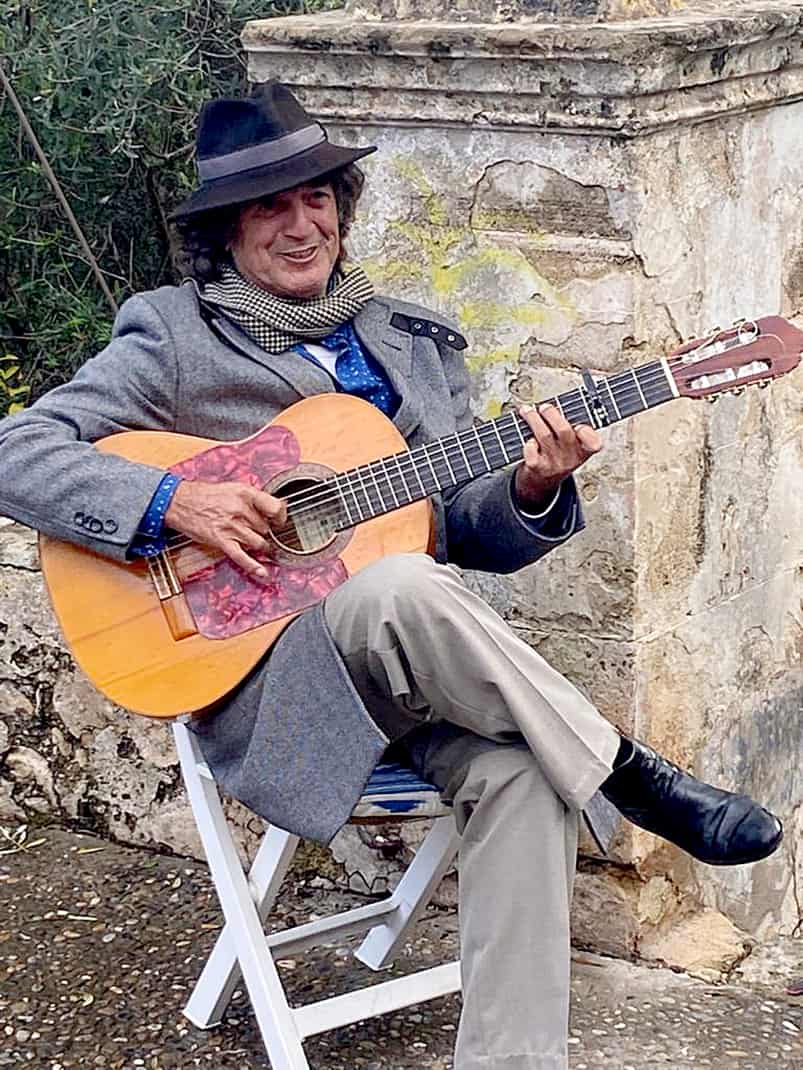
Pollenca
This town of 17,000 people sits at the far north end of the island, 60 kilometers from Palma. Sitting just six kilometers from the sea, Pollenca was once Mallorca’s stronghold against pirate invasions in the 15th century.
Pollenca (pronounced po-LENN-sa) is an ideal day trip. It doesn’t hint at a tourist trap. I saw no cheap souvenir stands selling Pirate Soap on a Rope. What I saw were tranquil plazas, a terrific museum with a tapestry visited by the Dalai Lama and arguably the best view on the island. Locals drank coffee outside in a sun that finally awoke from its week-long coma. Shopkeepers chatted on street corners.
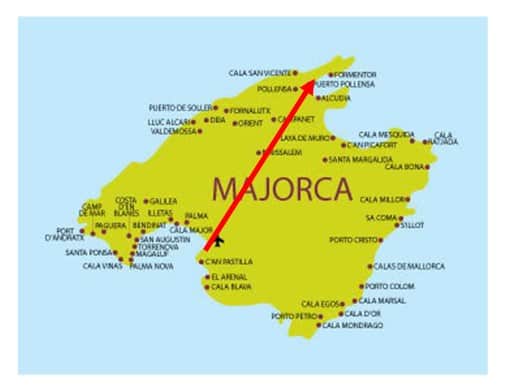
It’s more than a typical Mallorcan village. It’s a beautiful slice of Mallorcan life.
Pollenca’s original name was Polentia, the Latin word for “powerful.” During the Roman Empire, Pollenca was the most powerful town on Mallorca. It was Mallorca’s first fishing harbor but because of its proximity to the sea, was a frequent target of Moorish pirate raids. About a dozen of us wandered through the narrow, quiet streets past medieval towers built in the 14th and 15th centuries where people would lock themselves in during attacks.
In Pollenca, all roads lead to Plaza Mayor, a sun-splashed plaza with cafes and outdoor, covered seating. A six-foot-tall drinking fountain from the 19th century anchors one end. On a nearby backstreet, our guide pointed to a pharmacy that played an important role in Mallorcan history. Pollenca was famous for having lookouts all along the coast. In 1550 the Moorish pirates attacked again and the town’s men, led by one John Mas, won the battle.
From the balcony of that pharmacy he announced the victory. To this day, every year on Aug. 2 the locals dress like Moors and Christians and have a mock battle on the street. The street is named Carrer de John Mas.
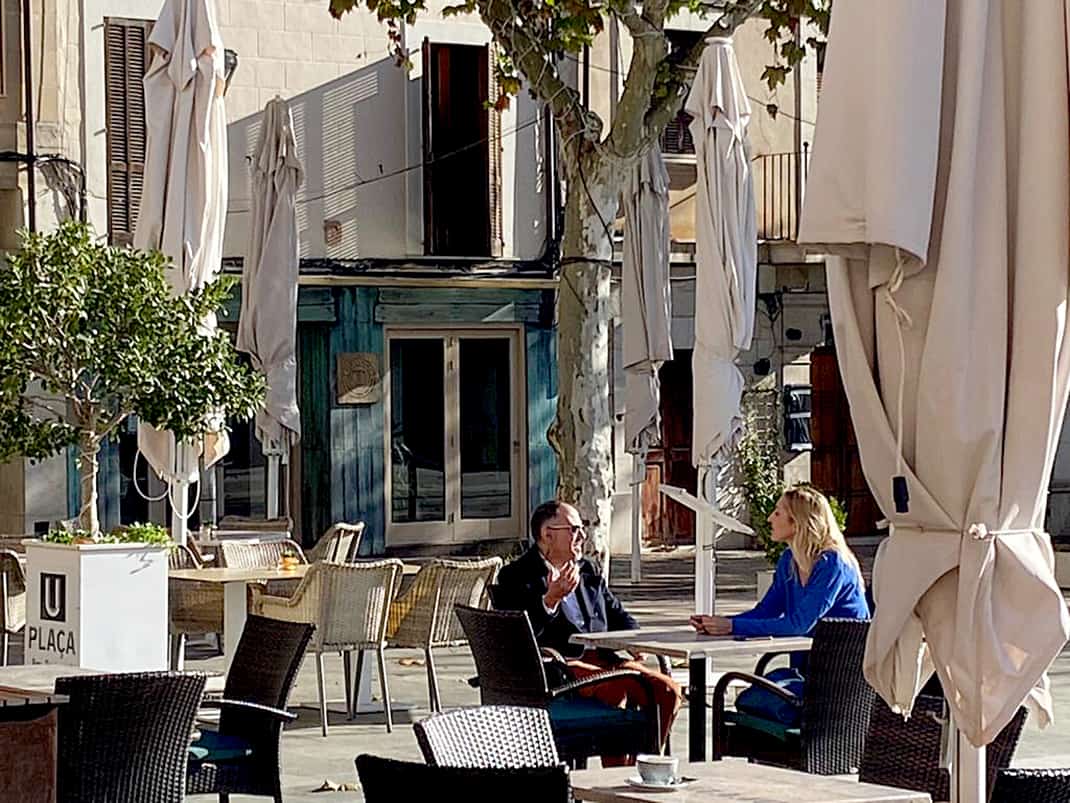
Pollenca’s prize is Calvary Hill. It’s 365 steps to a small stone church called Calvary Chapel. Instead of the long procession straight uphill, we took the circular route where every corner revealed a more astonishing view. Off in the distance, atop a 1,000-foot green hill stood Puig de Maria, a convent where nuns lived from 1364-1576 when they couldn’t live in town.
As we climbed, we could see a swath of brown and beige roofs of the town leading to the Bay of Alcudia to our right and the Bay of Pollenca to the left. We walked along stone walls built by the Moors and passed a series of crosses built 100 years ago. It’s the scene of an eerie Good Friday ritual when town folk hold a mock crucifixion at the chapel then carry the body down this road.
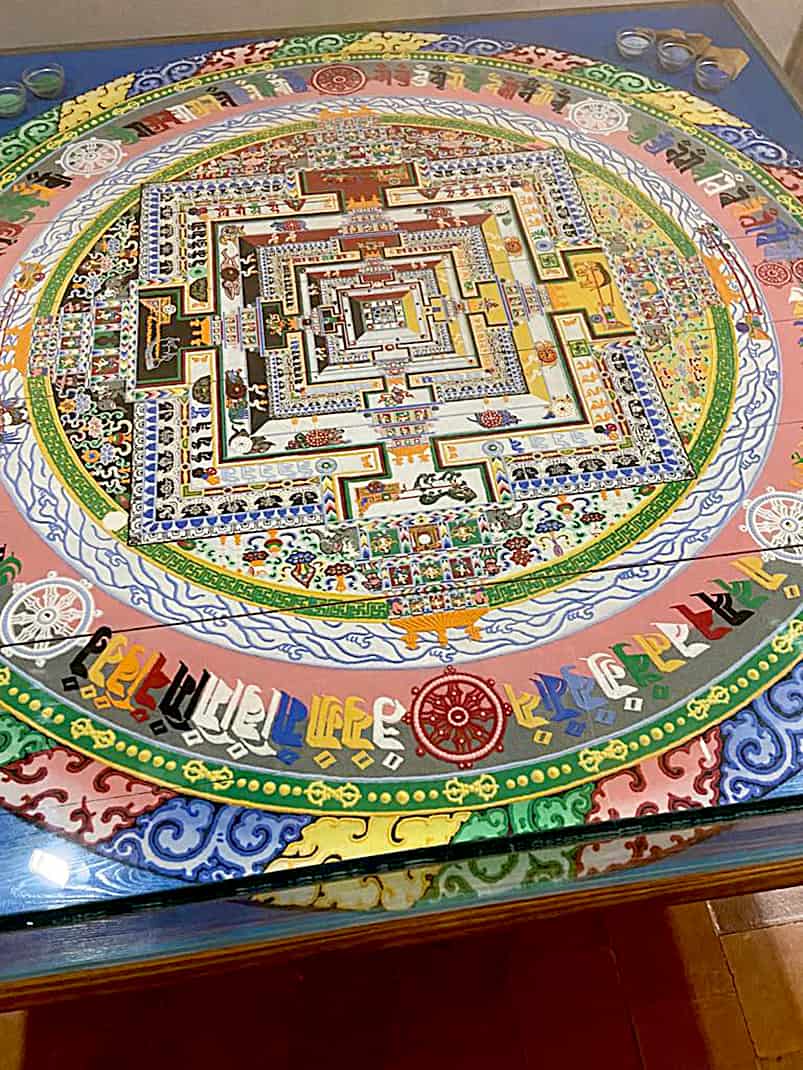
Pollenca is a lively town. In summer, they often have music festivals in the museum built in 1616 as a cloistered monastery. Today it features artifacts dating back to the Roman Empire, modern art pieces and an incredible tapestry made with multi-colored piles of sand. It’s a mind-blowing display of intricate designs featuring 722 different gods and goddesses.
Three Buddhist monks completed the project in three weeks in 1990 just in time for Dalai Lama’s visit. “Don’t sneeze,” one visitor said.
The sun stayed out. It almost seemed like beach weather. We rode back as the sun set on the sea.
If you want to go …
How to get there: Binissalem — Several trains a day from Palma. The 21-minute ride is 2-4 euros.
Finca Publica Galatzo’ — Several buses a day go from Palma’s Estacio Intermodal station to Es Capdella. The 1 hour, 10-minute ride is 4-6 euros then it’s a 45-minute walk to Finca Publica Galatzo. Car rentals at Palma airport start at 10.55 a day.
Pollenca — Several buses daily leave from Estacio Intermodal. The one-hour ride is 7 euros.
When to go: Average temperatures in November are 50s and low 60s with about six days of rain. (I received all six.) In July its 70-85 with no rain.
Where to stay: BQ Augusta, Corb Mari 22, Palma, 34-971-700-813, BQ Hoteles: Mallorca or Andalusia, Augusta@bqhotels.com. I paid 68 euros a night. In July it jumps to 260 euros for a minimum two-night stay.
Where to eat: Celler sa Premsa, Placa del Bisbe Berenguer 8, Palma, 34-971-72-3529, CELLER SA PREMSA – Restaurante de cocina mallorquina, mail@cellersapremsa.com, 12-4, 7:30-11:30, closed Sunday. Located in city center, best place in town for local cuisine.
Casa Jacinto, Cami Tramvia 37, Palma, 34-971-40-1858, www.casajacinto.es, casajacinto@gmail.com, 1-5 p.m., 7 p.m.-midnight. A meat lover’s paradise away from the tourist mob.
For more information: Vins Nadal, c/Ramon Llull 2, Binissalem, 34-971-511-058/7620-296-200, Vins Nadal – Bodega Familiar desde 1932, 9 a.m.-5 p.m. Monday-Friday, October-April; 10 a.m.-2 p.m. May-September.
Consell de Mallorca, Placa de la Reina 2, 34-971-17-3990, 8:30 a.m.-67 p.m. Monday-Friday, 8:30 a.m.-3 p.m. Saturday.
Mallorca Private Tour Guides, 34-609-807-964, www.mallorcaprivatetourguides.com, info@mallorcaprivatetourguides.com.


December 7, 2021 @ 2:01 pm
John, I understand you didn’t enjoy forest bathing and the weather wasn’t good but that would have been the highlight of my trip. You sound a little intolerant and this is not typical of your interesting blog. I like the Baelerics and not everyone is a reporter but you will have put off people who enjoy going to Mallorca for the mystical side of it.
September 15, 2022 @ 11:12 pm
Or some people actually enjoy his candidness. I actually appreciate the realness and comedic thoughts.
December 7, 2021 @ 2:05 pm
Had the good fortune to spend the month of April along with my family in Pollenca. Fantastic time. A friend’s house — he loaned it to us — was on Carrer de les Cruces, backing on to the road to Calvary. This was about thirty-five years ago, when tourism was less of a business. After spending eight months doing research around Marina de Carrara, Pollenca was a sunny paradise long remembered.